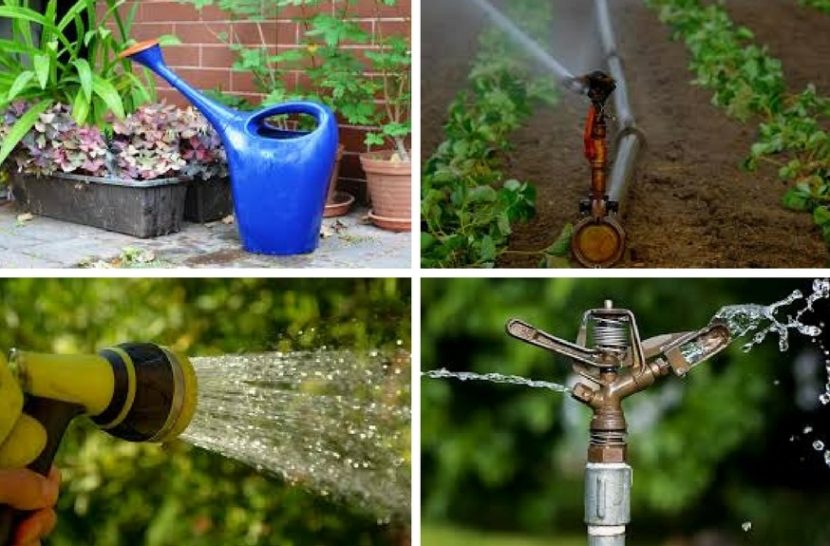Water is the main constituent of plants and it also helps plants receive all the needed nutrients. Therefore they should never be short of and you have to water your garden in drought.
Some general rules for successful irrigation:
- Make sure your soil is soft so they receive water and the rain doesn’t flow off the soil’s crust
- The best is drip irrigation system. You weave the pipes directly along the rows of crops. Another system that is easier than carrying watering cans is watering your garden with sprinkles, which have to stay open enough time to water the plants properly.
- If you are watering with a hose, install protective poles at the angles of your garden beds to avoid damaging any crops with it.
- Rainwater is best for watering your garden. Is you use tap water, leave it in a container for some time before watering. Make sure the water is tepid, not cold; it should have similar temperature as the crops, otherwise it shocks them.
- During summer, irrigate your garden in the morning, or late in the evening when the soil gets cool enough. During early spring and late autumn irrigate in the morning so the water doesn’t freeze during the night.
- Start watering moderately when the temperature is above 20 °C (68 °F) and there was no rain for more than a week.
- The soil keeps rainwater easier if it is moist; water the garden before the rain.
- It is better to water once or twice per week excessively than a little every day, for crops roots to grow deeper. The only exception is young seedlings that need frequent watering in small amounts to keep the soil moist, but not too wet.
- When you are still learning gardening and watering, check how deep different amounts of water go.
- Some crops do not like water on their leaves. Moisture can cause diseases.
- You can make irrigation easier with hoses with holes. You can irrigate larger crops by using plastic bottles with a narrow neck, turned upside down (without a cork) dug into soil beside the crop. Cut the bottom off and pour the water in.
- You can water most low growing crops from above (on their leaves) from the beginning to prevent grey mold. But do not use cold water on hot leaves.
- To keep the soil moist, cover as much surface area as possible. Use mulches (straw, dry cut grass, bark), combinations of crops with long-growth period and fast-growing crops (radish/black radish with lettuce or radicchio, bush beans with brassica vegetables, and young lettuce with tomatoes/pepper). Sow crops for green fertilization to empty beds.
- At high temperatures, water the crops with algae solution once per week, shade the newly sown crops, and plant low crops in the shade of the tall growing crops.
- Check the websites with water consistency data in days with low temperature, to not miss possible drought.
- If the soil gets too dry, water slowly, several times in smaller amounts, every half an hour. Check the soil with a shovel for moisture.

